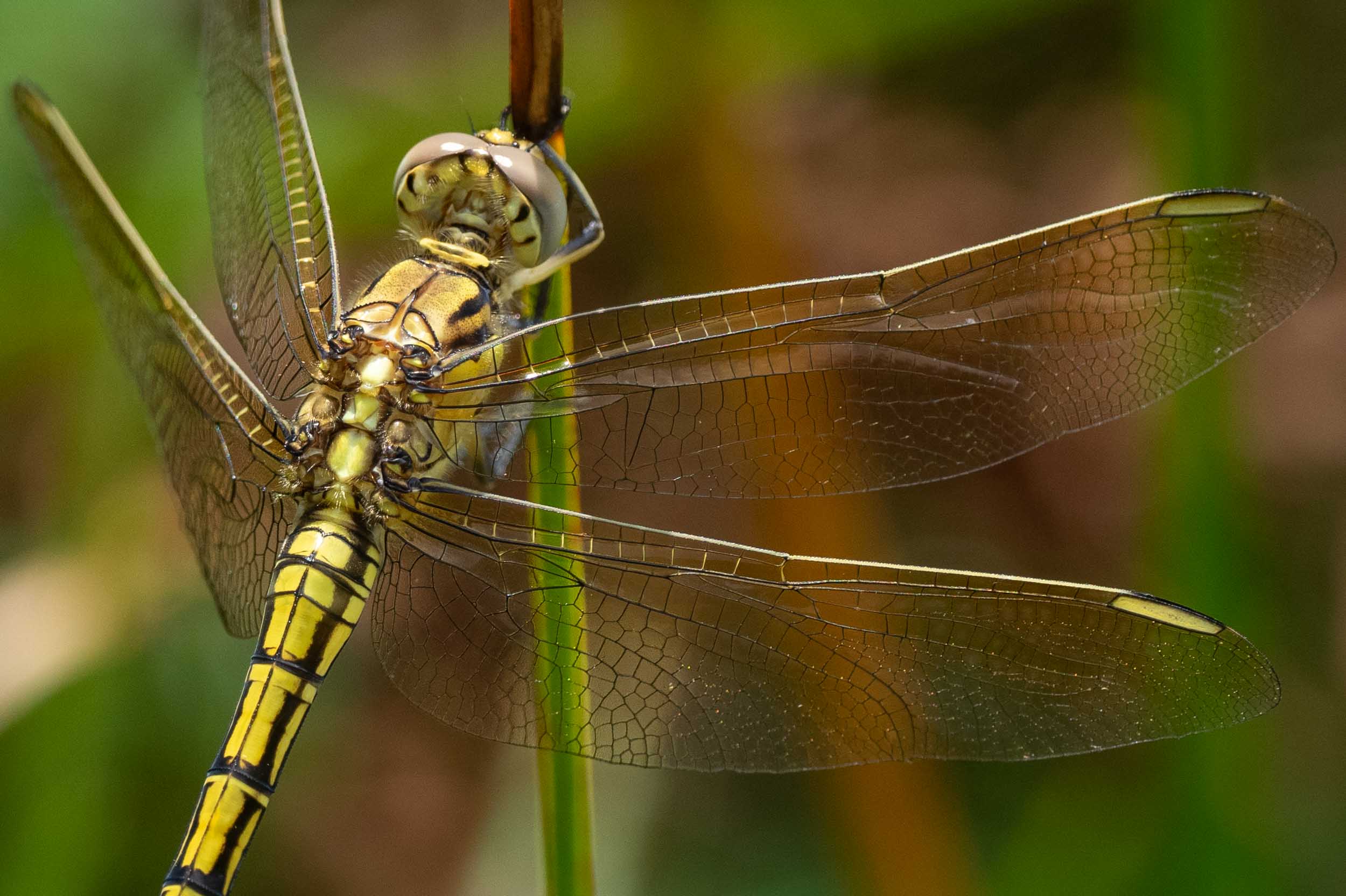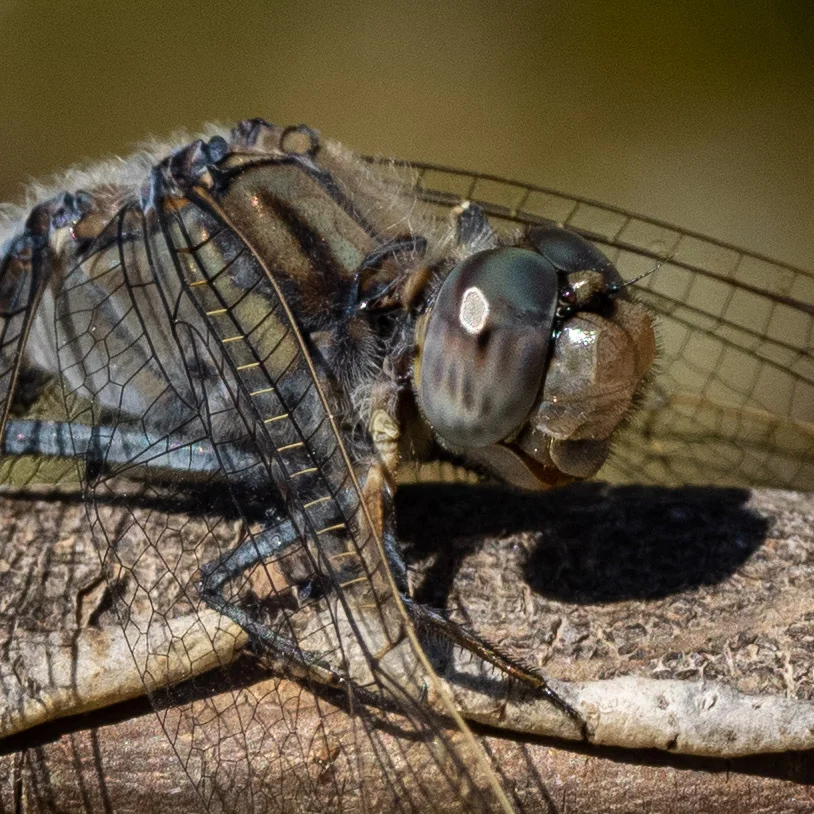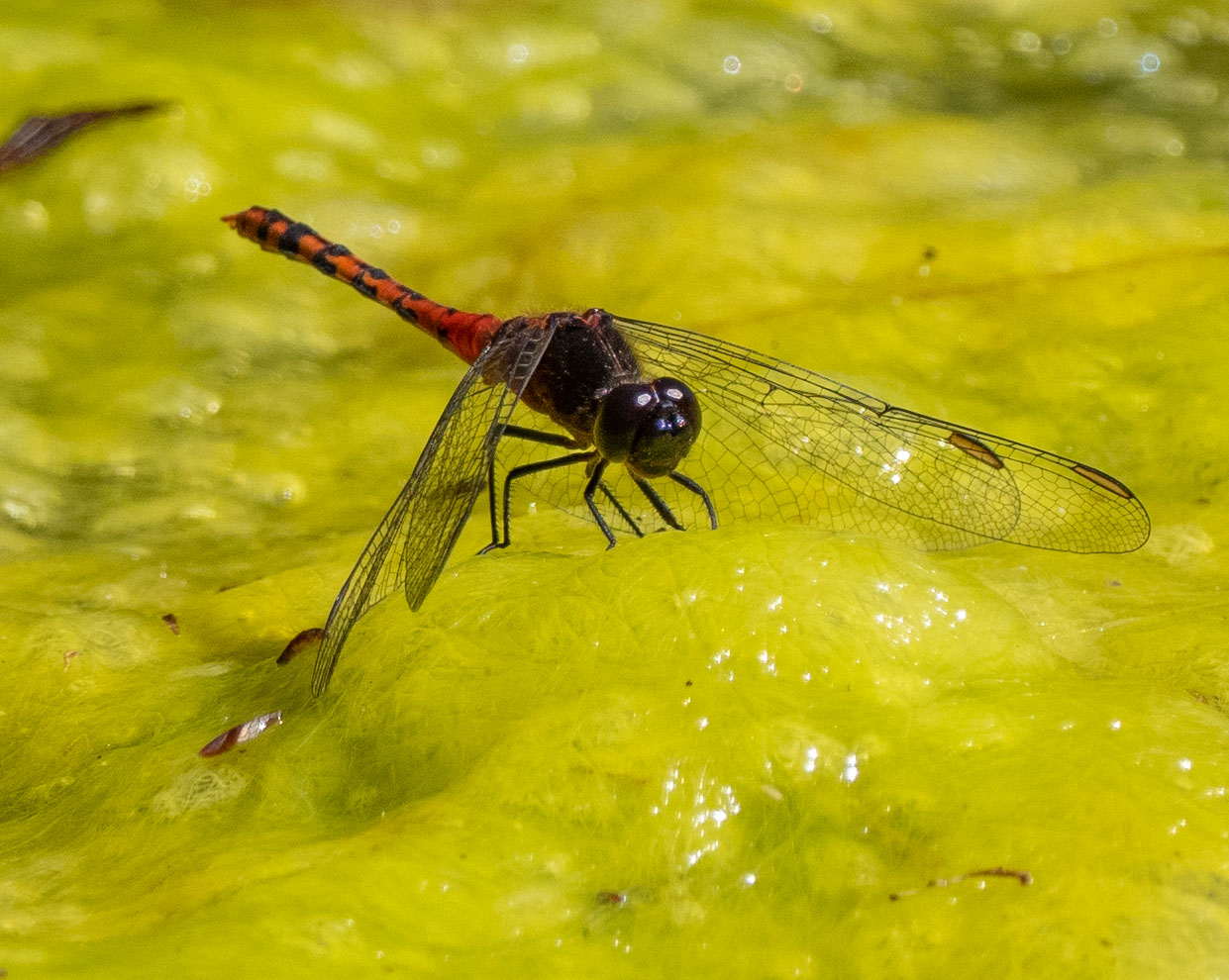Dragonfly habitats

Summer is a good time of the year for dragonfly spotting. Some species fly year round, but it’s during the warmer months that every body of water seems to have its share of these aerial hunters.
This week I’ve been quite amazed by the local species diversity. Within 7km of home, over two days and just a couple of hours hunting, we’ve seen ten species, including a couple of ‘lifers’ … species we’d never seen before.
I should clarify that by ‘dragonfly’ I mean Odonata. That is, both dragonflies and damselflies. There are over 300 species in Australia, across 112 genera: 12 families of damselflies and 18 of dragonflies.
Odonata species observed this week, at home and during brief, casual visits to two nearby sites
Of course, we were looking in the right kinds of places to find them.
near water
This is not the only place to see dragonflies and damselflies. The adults, and particularly the females, fly away from water to hunt and only return to creeks and lakes for breeding. Males, however, tend to hang about near water, staking out territories and waiting for females to arrive.different types of water
Different species favour different water bodies. Their larvae are variously adapted for still, sluggish or fast-flowing water. Some species are quite opportunistic, while others have very particular requirements.
Habitat 1: the pond
An artificially natural pool
Constructed during the Winter of 2016, our small frog pond is already quite an established ecosystem. It has been through various phases, including an early period when it was home to masses of voracious diving beetles.
At the moment it is teeming with tadpoles.
Photo taken 28/12/18
Although not a naturally occurring pond, we largely allow nature to run its course.
We don’t clean it. At times it develops quite a thick algal growth, but then that dies off and the water clears again. Who knows what accumulated debris now covers the sandy bottom of the central ‘deep’ zone?!
And we haven’t introduced any animals to it, apart from whatever might have hitched a ride on the pots of water plants we placed in the middle. Importantly, we’ve never introduced any fish, and none have found their way in. The pond is quite a distance from the nearest freshwater stream, and being on a high part of the block, it doesn’t receive any creek overflow.
It is best described as a ‘shallow, permanent pool’. Our one exception to this hands-off approach is that we’ve never allowed it to dry out completely. We do let it drop about 300mm in depth, but then we usually relent and add a few hundred litres of tank water.
Blue Skimmer (Orthetrum caledonicum)
By far the most common species at home this year is the Blue Skimmer.
December 2018: Blue Skimmer dragonfly (Orthetrum caledonicum)
The mature larvae typically climb the pond side vegetation, but lately they’ve taken to climbing the wall of the house to eclose!
22/12/18: newly eclosed Blue Skimmer (Orthetrum caledonicum). She took her maiden flight just seconds after this photo was taken.
29/12/18: mature adult male
Young Blue Skimmers are not blue at all. They’re yellow with grey-black markings.
As they mature, the cuticle develops a waxy coating and so they appear blue. This is particularly true for the males.
And, if they’re lucky, they can live for several months. This male has lost part of one leg, perhaps through a near miss with a hungry bird.
There are - or were - other dragonfly larvae in the pond. They are larger and a very different shape to the Blue Skimmer larvae.
28/12/18: Shed exoskeleton of unknown dragonfly larva
28/12/18: Shed exoskeleton of Orthetrum caledonicum
Not every eclosing dragonfly makes it. We’ve seen them being carried off by foraging birds, and today this one was providing a meal for tadpoles and ants.
29/12/18: dead Blue Skimmer at the edge of the pond
The Blue Skimmer is a very widespread species. It is found across Australia and on some Pacific Islands. It’s also a recognised ‘opportunist’ species, laying eggs in a wide range of still or slow-moving water bodies. A complete generation - egg to mature adult - can be as short as 8-10 weeks.
Habitat 2: a beachside lagoon
Just 5km from home, behind the beach, is a shallow lagoon which occasionally breaks through to the sea. And occasionally the sea breaks through to the lagoon. At the moment it is closed and supporting a thick mat of green algae.
The lagoon is currently home to all kinds of aquatic insects, as well as dozens of water striders hunting and scavenging the surface. The water is tannin-stained but schools of trapped mullet attest to a recent saltwater incursion. I imagine the water is quite brackish.
25/12/18: water striders fighting over their Xmas lunch
But some damselflies and dragonflies don't seem to mind a bit of salt.
Black-faced Percher (Diplacodes melanopsis)
25/12/18: a single male Black-faced Percher was seen prowling a short stretch of the lagoon
The Scarlet Percher (Diplacodes haematodes) and the Wandering Percher (Diplacodes bipunctata) are both found across Australia and beyond. But this species - the Black-faced Percher (Diplacodes melanopsis) - has a far more restricted distribution along the coastal south-east of the country. And this is actually the first time we’ve seen one!
Apparently these small dragonflies will utilise a variety of still or slow-flowing bodies - including swamps.
Eastern Billabongfly (Austroagrion watsoni)
25/12/18: Eastern Billabongfly - a tandem pair, with female on the right
A widespread and quite common species. The female uses her blade-like ovipositor to cut into floating or submerged plants, and then deposits an egg. And the male retains his grip on her neck throughout! Having watched this activity at length on several occasions, I’m convinced that the female benefits. Sometimes she will be fully submerged as she probes for good egg-laying sites, and when she is done the male can fly her clear of the water.
Habitat 3: A fast-flowing stream
Seven kilometres south from here - as the dragonfly flies - is Merrica River Crossing. It is within the Nadgee Nature Reserve, a declared Wilderness Area of special conservation value. This week I decided to make a short visit in search of dragonflies.
The water is completely unpolluted and totally fresh. The saltwater of the estuary does not extend upstream to the crossing. The current varies according to local rainfall, but it is never still.
This week the small river was running quite strongly.
When I first arrived, all seemed quiet. A few water striders and plenty of tadpoles and diving beetles, but little aerial activity. But as the day warmed, and as I looked more closely, I discovered that it wasn’t quiet at all. Five species sighted, and I was there for less than an hour!
Whitewater Rockmaster (Diphlebia lestoides)
We’d seen this species only once before. A single female in early December, at a very similar creek just 20km further west. This was my first sighting of a brilliant blue male!
Several males were patrolling the creek, flying brief, low sorties above the water before returning to their rocky perches. I didn’t see any females.
Diphlebia belongs to a small damselfly family, Diphlebiidae. They could easily be mistaken for dragonflies. Unlike most damselflies, Diphlebia rests with its wings outstretched, very dragonfly-like. They are also unusually chunky-looking for damselflies.
Diphlebia larvae have flattened bodies and live under rocks in flowing rivers and streams.
Southern Vicetail (Hemigomphus gouldii)
The genus Hemigomphus is endemic to Australia. They are small dragonflies, belonging to the family Gomphidae. The Southern Vicetail (Hemigomphus gouldii) is only found in the coastal south east of Australia.
Again, this was a ‘lifer’ for us.
I saw several females laying eggs in the shallow, flowing water. In flight, a female would briefly touch the tip of her abdomen to the water surface, fly on, and repeat the process. The males were clearly holding territories, repeatedly returning to favoured perches on rocks or gravel.
26/12/18: a male Southern Vicetail (Hemigomphus gouldii)
Bronze Needle (Synlestes weyersii)
The long, thin bodies of the damselflies in this family are quite unmistakable. As is their habit of hanging vertically from vegetation. The only difficulty can be in spotting them. They seem to be reluctant to fly, and tend to hang, unmoving, in the shade of riverside vegetation.
I found just two Bronze Needles at the Crossing. They were suspended from the same small bush, growing from a rock, in the middle of the fastest part of the stream. Both were females. Males show the same metallic green colouration. The bronze one appears to be newly eclosed.
Common Flatwing (Austroargiolestes icteromelas)
Like Diphlebia, Flatwings are another group of damselflies that hold their wings in a very un-damselfly-like manner.
26/12/18: the characteristic perching stance of the Common Flatwing
However, there’s little chance of mistaking them for dragonflies. They are slight, with thin bodies and long legs.
26/12/18: wings held spread are easily buffeted by the wind, as here
This is a species we see often, including in the forest around our home pond. There are several related species which all look remarkably similar, but so far every image I have seems to be A. icteromelas.
I will continue to look out for other species.
REFERENCE
* Theischinger, G. & Hawking, J. 2012. The Complete Field Guide to Dragonflies of Australia. CSIRO Publishing, Collingwood.





























